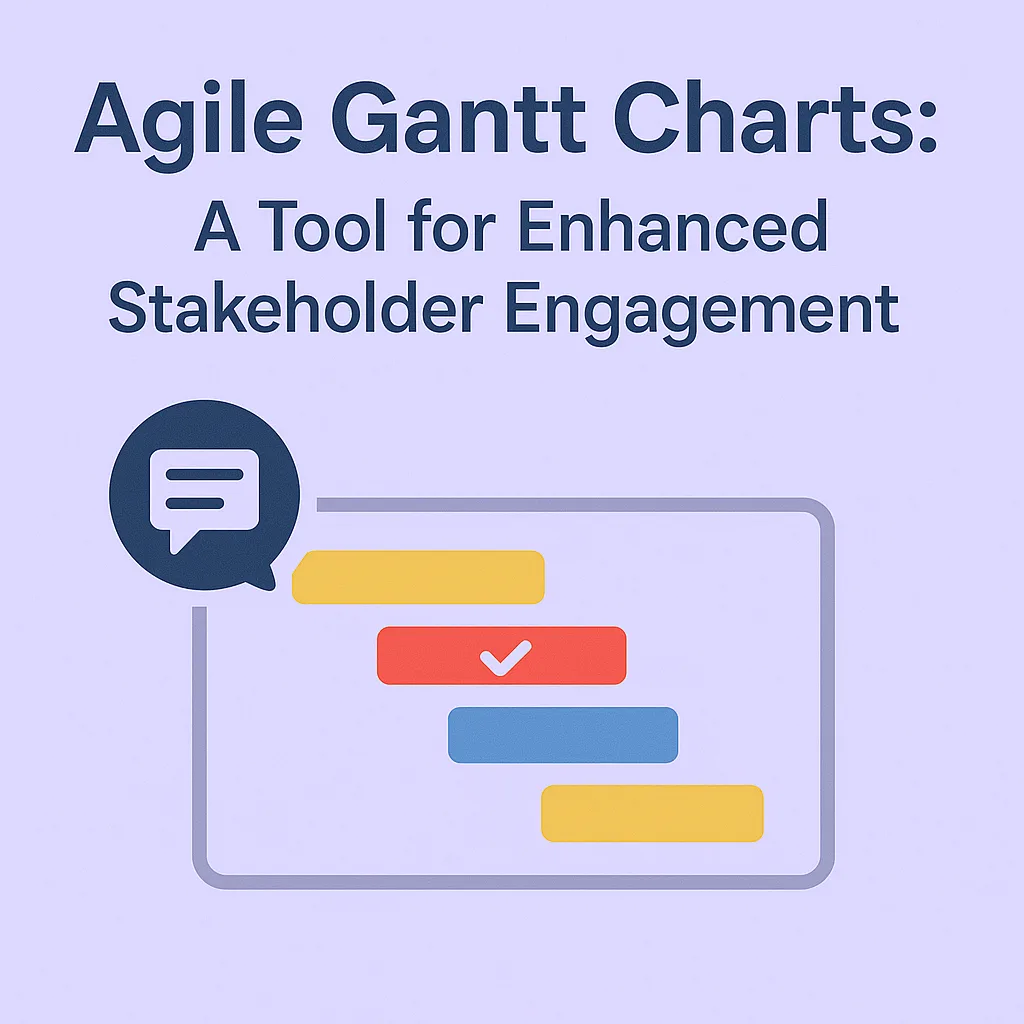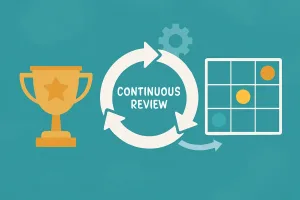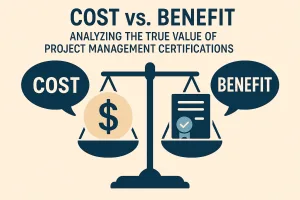Introduction to Agile Gantt Charts
Effective communication and stakeholder engagement are paramount to the success of any initiative. One tool that has traditionally been used to visualize project timelines and tasks is the Gantt chart. However, as project management methodologies evolve, particularly with the rise of Agile practices, the Gantt chart has also adapted to meet the needs of modern project teams. This section will explore the foundational concepts of Gantt charts, the principles of Agile methodologies, and how the integration of these two can significantly enhance stakeholder engagement.
Defining Gantt Charts
Gantt charts are visual representations of a project schedule, illustrating the start and finish dates of various elements of a project. Developed by Henry Gantt in the 1910s, these charts have become a staple in project management for their ability to provide a clear overview of project timelines, task dependencies, and progress tracking. Traditionally, Gantt charts are used in waterfall project management, where tasks are sequential and progress is linear. They allow project managers to allocate resources effectively, monitor deadlines, and ensure that projects stay on track.
Introducing Agile Methodologies
Agile methodologies, on the other hand, represent a shift from traditional project management approaches. Agile emphasizes flexibility, collaboration, and iterative progress through short cycles known as sprints. This approach allows teams to adapt to changes quickly, respond to stakeholder feedback, and continuously improve the product being developed. Agile methodologies prioritize customer satisfaction and team collaboration, making them particularly effective in dynamic environments where requirements may evolve over time.
Fusion of Agile Principles with Gantt Charts
The fusion of Agile principles with Gantt charts creates a powerful tool for enhancing stakeholder communication. Agile Gantt charts retain the visual clarity of traditional Gantt charts while incorporating the iterative nature of Agile methodologies. Here’s how this integration can benefit stakeholder engagement:
- Transparency: Agile Gantt charts provide stakeholders with a clear view of project timelines and progress, fostering transparency. Stakeholders can see which tasks are currently being worked on, what has been completed, and what is upcoming, allowing them to stay informed about the project’s status.
- Flexibility: Unlike traditional Gantt charts, Agile Gantt charts can be easily updated to reflect changes in project scope or timelines. This adaptability ensures that stakeholders are always aware of the latest developments and can adjust their expectations accordingly.
- Enhanced Communication: By using Agile Gantt charts in regular stakeholder meetings, project managers can facilitate discussions around progress, challenges, and next steps. This ongoing dialogue helps to build trust and keeps stakeholders engaged throughout the project lifecycle.
- Focus on Deliverables: Agile Gantt charts can highlight key deliverables and milestones, aligning stakeholder expectations with project outcomes. This focus ensures that stakeholders understand the value being delivered at each stage of the project.
The Importance of Stakeholder Engagement
Stakeholder engagement is a critical component that can significantly influence project outcomes. Stakeholders, including clients, team members, sponsors, and end-users, play various roles that can either propel a project toward success or lead it to failure. Understanding their needs, expectations, and concerns is essential for project managers aiming to deliver results that align with stakeholder interests.
Role of Stakeholders in Project Outcomes
- Decision-Making Influence: Stakeholders often have the authority to make key decisions that affect project direction, resource allocation, and timelines. Their input can shape project goals and priorities, making their engagement vital for ensuring that the project meets its intended objectives.
- Resource Provision: Many stakeholders control resources, whether financial, human, or technological. Engaging them effectively can facilitate access to necessary resources, ensuring that the project has what it needs to succeed.
- Risk Management: Stakeholders can help identify potential risks early in the project lifecycle. Their insights can lead to proactive measures that mitigate risks, ultimately enhancing project resilience.
Benefits of Regular Stakeholder Engagement
- Improved Feedback: Regular communication with stakeholders fosters an environment where feedback is encouraged and valued. This feedback loop allows project managers to make informed adjustments, ensuring that the project remains aligned with stakeholder expectations and requirements.
- Enhanced Project Alignment: Engaging stakeholders throughout the project lifecycle helps ensure that all parties are on the same page regarding project goals, timelines, and deliverables. This alignment reduces the likelihood of misunderstandings and miscommunications, which can derail progress.
- Increased Buy-In and Support: When stakeholders feel involved and informed, they are more likely to support the project. This buy-in can translate into increased cooperation, resource availability, and advocacy for the project within their respective organizations.
Risks Associated with Poor Stakeholder Communication
- Misalignment of Goals: Without regular engagement, stakeholders may develop differing expectations about project outcomes. This misalignment can lead to conflicts and dissatisfaction, jeopardizing project success.
- Delayed Feedback: Poor communication can result in delayed feedback, which may hinder timely decision-making. This delay can cause project timelines to stretch and lead to missed deadlines.
- Increased Resistance: Stakeholders who feel excluded from the project may become resistant to changes or decisions made without their input. This resistance can manifest as pushback during critical phases of the project, complicating the implementation of necessary adjustments.
How Agile Gantt Charts Facilitate Stakeholder Engagement
Agile Gantt charts serve as a powerful tool in project management, particularly for enhancing stakeholder engagement. By providing a clear visual representation of project timelines and milestones, these charts help keep stakeholders informed and involved throughout the project lifecycle. Here are several specific ways Agile Gantt charts facilitate this engagement:
- Visual Representation of Project Timelines and Milestones: Agile Gantt charts offer a straightforward visual layout that outlines the project schedule, including key milestones and deadlines. This visual clarity allows stakeholders to quickly grasp the project’s scope and timeline, making it easier for them to understand how their contributions fit into the overall plan. By seeing the project’s progression at a glance, stakeholders can better appreciate the efforts of the project team and the importance of their own roles.
- Real-Time Progress Tracking and Adaptability: One of the significant advantages of Agile Gantt charts is their ability to display real-time progress. As tasks are completed or adjusted, stakeholders can see updates immediately, which fosters transparency and trust. This real-time visibility allows project managers to communicate changes effectively, ensuring that stakeholders are always aware of the current status of the project. Moreover, Agile methodologies emphasize flexibility, and Gantt charts can be easily modified to reflect changes in project scope or timelines, keeping stakeholders aligned with the latest developments.
- Integration of Stakeholder Feedback Loops: Agile Gantt charts can incorporate feedback loops that actively involve stakeholders in the project process. By scheduling regular updates and review sessions directly within the Gantt chart framework, project managers can solicit input from stakeholders at critical junctures. This integration not only enhances stakeholder engagement but also ensures that their insights are considered in decision-making processes. By making stakeholders feel valued and heard, project managers can foster a collaborative environment that enhances project outcomes.
Creating an Agile Gantt Chart
Agile Gantt charts serve as a powerful tool for project managers to enhance stakeholder engagement by providing a clear visual representation of project timelines and deliverables. Here’s a step-by-step guide on how to create an Agile Gantt chart that effectively keeps stakeholders informed and engaged throughout the project lifecycle.
1. Identify Project Goals and Key Deliverables
Begin by clearly defining the overarching goals of the project. This involves:
- Setting SMART Goals: Ensure that the goals are Specific, Measurable, Achievable, Relevant, and Time-bound.
- Listing Key Deliverables: Identify the major outputs that will be produced during the project. This could include features, products, or milestones that are critical to the project’s success.
2. Outline Phases and Tasks Using Agile Principles
Incorporate Agile methodologies by breaking down the project into manageable phases and tasks:
- Sprints and Iterations: Organize the project into sprints, which are short, time-boxed periods where specific tasks are completed. Each sprint should have a clear objective and deliverables.
- Task Breakdown: For each sprint, outline the specific tasks that need to be accomplished. This helps in maintaining focus and allows for flexibility in adjusting tasks based on stakeholder feedback.
3. Incorporate Stakeholder Inputs and Define Communication Points
Engagement with stakeholders is crucial for project success. To ensure their involvement:
- Gather Feedback: Regularly solicit input from stakeholders during the planning phase and throughout the project. This can be done through surveys, meetings, or collaborative tools.
- Define Communication Points: Establish clear communication channels and points in the Gantt chart where stakeholders will receive updates. This could include sprint reviews, progress reports, and feedback sessions.
4. Choose the Right Tools and Software for Creating Agile Gantt Charts
Selecting the appropriate tools can significantly enhance the effectiveness of your Agile Gantt chart:
- Project Management Software: Utilize software that supports Agile methodologies and offers Gantt chart functionalities. Popular options include Trello, Asana, and Microsoft Project.
- Customization Features: Look for tools that allow for customization of the Gantt chart to reflect Agile principles, such as the ability to adjust timelines easily and incorporate feedback loops.
By following these steps, project managers can create Agile Gantt charts that not only serve as a roadmap for project execution but also foster ongoing engagement and communication with stakeholders. This approach ensures that all parties are aligned, informed, and invested in the project’s success, ultimately leading to better outcomes and stakeholder satisfaction.
Best Practices for Using Agile Gantt Charts with Stakeholders
Agile Gantt charts can be a powerful tool for project managers aiming to enhance stakeholder engagement. By providing a visual representation of project timelines and progress, these charts help keep stakeholders informed and involved throughout the project lifecycle. Here are some best practices to maximize the effectiveness of Agile Gantt charts in stakeholder relations:
- Regularly Update Gantt Charts: Keeping Gantt charts current is essential for accurately reflecting the project’s status. Frequent updates ensure that stakeholders have access to the latest information, which fosters trust and transparency. This practice not only helps in tracking progress but also allows for timely adjustments based on stakeholder feedback or changing project dynamics.
- Use Color-Coding and Visual Indicators: Implementing color-coding and visual indicators can significantly enhance the readability of Gantt charts. By using different colors to represent various project phases, task statuses, or priority levels, stakeholders can quickly grasp critical information at a glance. Visual indicators, such as icons or symbols, can further highlight important milestones, deadlines, or potential risks, making it easier for stakeholders to focus on what matters most.
- Schedule Recurring Meetings: Establishing regular meetings with stakeholders to review Gantt charts is crucial for maintaining engagement. These meetings provide an opportunity to discuss progress, address concerns, and gather feedback. By making these sessions a routine part of the project management process, project managers can ensure that stakeholders remain informed and feel valued in their contributions to the project.
- Encourage Stakeholder Participation: Actively involving stakeholders in the planning and updating processes of Gantt charts can lead to better outcomes. By soliciting their input on timelines, task assignments, and priorities, project managers can foster a sense of ownership among stakeholders. This collaborative approach not only enhances engagement but also helps in aligning project goals with stakeholder expectations.
By implementing these best practices, project managers can leverage Agile Gantt charts to improve communication, foster collaboration, and ultimately enhance stakeholder engagement throughout the project lifecycle.
Conclusion
Stakeholder engagement is not just a beneficial practice; it is essential for the success of any project. Engaging stakeholders effectively ensures that their needs and expectations are met, fostering a collaborative environment that can lead to better project outcomes. By maintaining open lines of communication and providing regular updates, project managers can build trust and support among stakeholders, which is crucial for navigating challenges and achieving project goals.
Agile Gantt charts serve as a powerful tool to enhance this engagement. They offer several key benefits:
- Visual Clarity: Agile Gantt charts provide a clear visual representation of project timelines, tasks, and dependencies, making it easier for stakeholders to understand the project’s progress at a glance. This transparency helps in aligning expectations and reducing uncertainty.
- Flexibility: Unlike traditional Gantt charts, Agile Gantt charts are adaptable to changes. They allow project managers to update timelines and tasks in real-time, reflecting the dynamic nature of Agile methodologies. This flexibility ensures that stakeholders are always informed about the current status of the project.
- Enhanced Collaboration: By incorporating Agile principles, these Gantt charts facilitate better collaboration among team members and stakeholders. They encourage regular feedback and discussions, which can lead to more informed decision-making and a stronger sense of ownership among stakeholders.
- Improved Accountability: Agile Gantt charts help in assigning responsibilities clearly, making it easier to track who is accountable for each task. This clarity fosters a sense of responsibility and encourages stakeholders to stay engaged throughout the project lifecycle.
In conclusion, project managers are encouraged to adopt Agile Gantt charts as a strategic tool to enhance stakeholder engagement. By leveraging the visual clarity, flexibility, collaboration, and accountability that these charts offer, project managers can ensure that stakeholders remain informed and invested in the project’s success. Embracing this approach not only improves communication but also contributes to a more agile and responsive project management process. Implementing Agile Gantt charts can be a game-changer in fostering stronger relationships with stakeholders and driving project success.
Find out more about Shaun Stoltz https://www.shaunstoltz.com/about/.
This post was written by an AI and reviewed/edited by a human.



